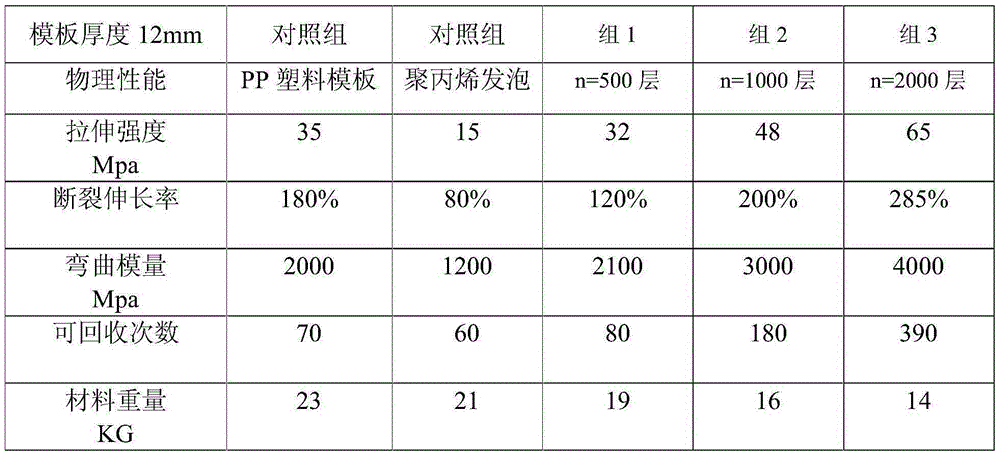Environment-friendly light building formwork and manufacturing method
A technology of building formwork and polypropylene, which is applied in the field of building formwork and its preparation, which can solve the problems of easy aging, insufficient strength and rigidity of the formwork, large coefficient of thermal expansion and contraction, etc., and achieve the effect of excellent high temperature resistance
- Summary
- Abstract
- Description
- Claims
- Application Information
AI Technical Summary
Problems solved by technology
Method used
Image
Examples
Embodiment 1
[0022] A building formwork, the components are calculated by weight parts: A 5-10 parts of glass fiber reinforced polypropylene, 80-90 parts of high melt strength polypropylene, C-homopolypropylene or 30% calcium carbonate polypropylene 10-30 parts, D-foaming agent 3-8 parts, E-color masterbatch 1-4 parts.
[0023] Its preparation method is as follows:
[0024] (1) Put A into the A extruder and extrude through mixing and plasticizing, high melt strength polypropylene (HMSPP) is added into the foaming agent and then put into the hopper of the B extruder and extrude through mixing and plasticizing, and C is put into C Extruded through mixing and plasticizing in the hopper of the extruder;
[0025] (2) Divide B extrudate and C extrudate obtained in step (1) into double-layer composites of B and C through a distributor, and then enter a superposition machine to superimpose and extrude a superimposed layered composite of 16-3000 layers; superimposition Composite body, A extruded ...
PUM
 Login to View More
Login to View More Abstract
Description
Claims
Application Information
 Login to View More
Login to View More - R&D
- Intellectual Property
- Life Sciences
- Materials
- Tech Scout
- Unparalleled Data Quality
- Higher Quality Content
- 60% Fewer Hallucinations
Browse by: Latest US Patents, China's latest patents, Technical Efficacy Thesaurus, Application Domain, Technology Topic, Popular Technical Reports.
© 2025 PatSnap. All rights reserved.Legal|Privacy policy|Modern Slavery Act Transparency Statement|Sitemap|About US| Contact US: help@patsnap.com



